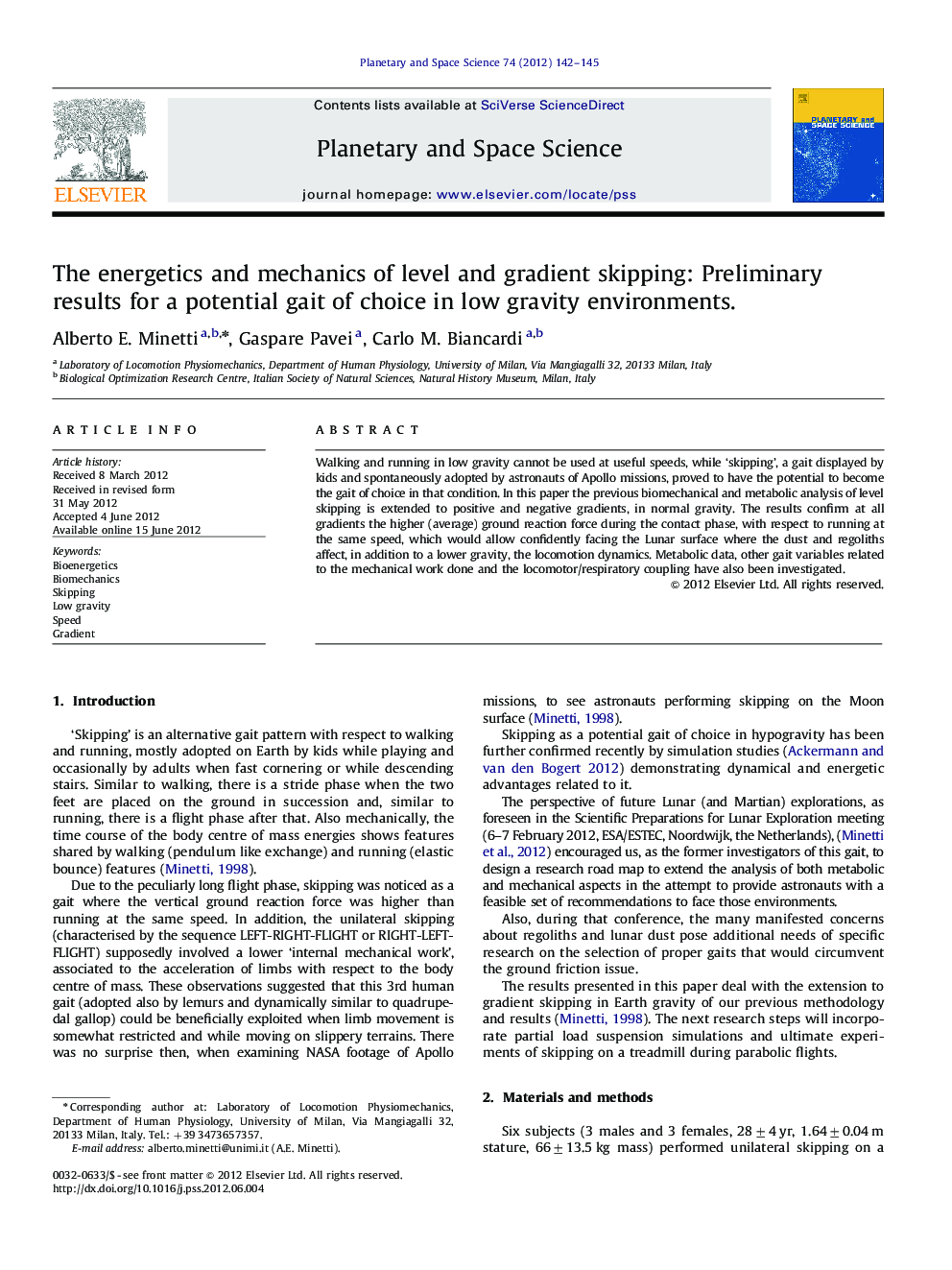| Article ID | Journal | Published Year | Pages | File Type |
|---|---|---|---|---|
| 1781392 | Planetary and Space Science | 2012 | 4 Pages |
Walking and running in low gravity cannot be used at useful speeds, while ‘skipping’, a gait displayed by kids and spontaneously adopted by astronauts of Apollo missions, proved to have the potential to become the gait of choice in that condition. In this paper the previous biomechanical and metabolic analysis of level skipping is extended to positive and negative gradients, in normal gravity. The results confirm at all gradients the higher (average) ground reaction force during the contact phase, with respect to running at the same speed, which would allow confidently facing the Lunar surface where the dust and regoliths affect, in addition to a lower gravity, the locomotion dynamics. Metabolic data, other gait variables related to the mechanical work done and the locomotor/respiratory coupling have also been investigated.
► Skipping is a potential gait of choice in low gravity environment. ► Bioenergetics and biomechanics at different speeds and gradients. ► Higher average vertical ground reaction force during the contact than in running. ► High cost of transport on Earth is likely mitigated in low gravity, there it is faster and viable. ► Present results as prerequisites for designing low gravity simulations of skipping.
